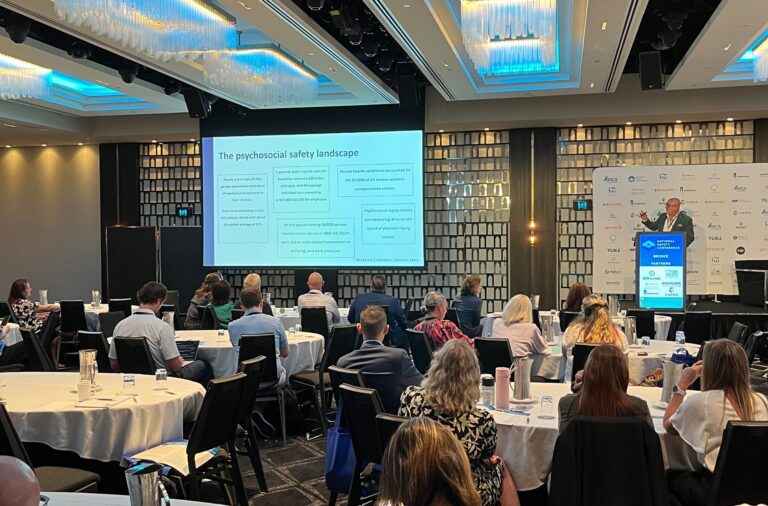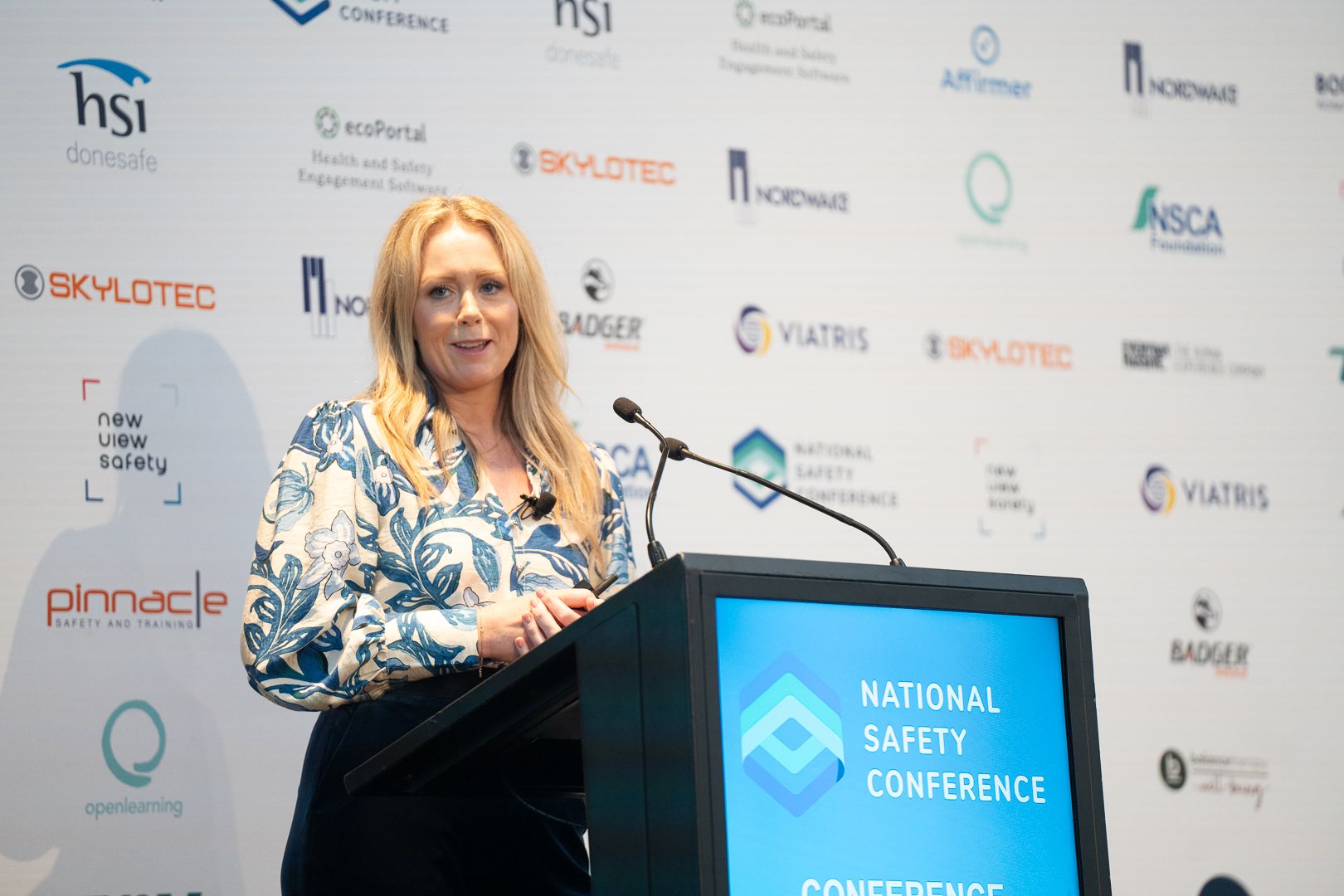
Megan Langtip, Manager of Health and Safety at Netflix, doesn’t work in an ordinary environment. Her team supports productions where, as she puts it, they might “blow things up or have someone fall off a building.” But when she joined the NSCA Foundation’s National Safety Conference virtually from the UK last month, her focus wasn’t physical risk. It was something more nuanced and just as critical.
It was about brave spaces. About reflective practice. About the emotional labour of safety leadership that often goes unnamed.
“This isn’t a how-to on journaling or a checklist of CPD activities,” Megan opened. “It’s about embedding reflection into how we lead, how we listen, and how we grow together as health and safety professionals.”
Brave Spaces, Not Just Safe Ones
At the heart of Megan’s presentation was the idea of a brave space. Unlike a safe space, which implies total comfort, brave spaces acknowledge that real conversations — the kind that move us forward — often involve discomfort. They make space for vulnerability, difference, and emotional honesty.
She shared a powerful poem by Mickey ScottBey Jones, which framed the conversation:
Together we will create brave space
Because there is no such thing as a “safe space” —
We exist in the real world.
We all carry scars and we have all caused wounds…
We will not be perfect.
This space will not always be what we wish it to be
But it will be our brave space together,
And we will work on it side by side.
For Megan, this isn’t just poetry — it’s practice.
“It’s about embracing imperfection, holding space for uncomfortable conversations, and being honest about the complexity of what safety professionals face — emotionally, operationally, and culturally.”
Reflective Practice Isn’t Just for Individuals
One of Megan’s key messages was that reflection shouldn’t be a solo act.
“One of the most valuable things we can do is talk openly about our challenges — not just to get advice, but to be truly heard.”
When reflection becomes a shared habit across teams, it builds trust, surfaces blind spots, and strengthens culture. Megan urged safety professionals to move beyond individual journaling or ad-hoc venting — and instead build systems that make reflection part of the rhythm of work.
Two Tools That Work
- Triads
At Netflix, Megan’s team uses structured three-person conversations called triads. They can be adapted, but follow three main formats:
- The Silent Observer: One person shares a challenge. The others discuss what they heard, without the original speaker contributing.
- Targeted Questioning: The observers generate thoughtful, probing questions — focusing on curiosity, not critique.
- Advice Giving: Observers offer concrete advice, as if the challenge were their own.
“It can be confronting,” Megan admitted, “but also illuminating.”
She reflected on how these triads helped her notice patterns in her own language — what she repeated, what she downplayed, how she came across to others.
- Shared Weekly Reflections
The second tool? A simple, shared Google or Teams doc where every team member adds one short reflection per week.
“Over time, it builds a powerful log of lessons, questions, and patterns,” she said. “It also creates a visible culture of learning — something that can be easily missed in busy production environments.”
And her advice to anyone trying to introduce reflective practice in their own team?
“Make it obvious, make it attractive, make it flexible — and keep going, even if it’s not perfect.”
Why This Work Matters
In an industry where safety leaders are often expected to be bulletproof, Megan’s message was refreshingly human.
“We don’t have to get it right every time,” she said. “But we do have to be willing to show up, to listen, and to keep working on it — side by side.”
Reflective practice isn’t just about learning from incidents or ticking off development goals. It’s about creating space — space for honesty, for emotion, for the complexity of the work health and safety profession.
It’s how brave cultures are built. One conversation, one reflection, one moment of honesty at a time.
About Megan Langtip
Megan is the Manager of Health and Safety at Netflix, focusing on film and TV production. She’s worked around the world in health and safety, handling all sorts of unique and challenging situations within the creative industries.
Share:



